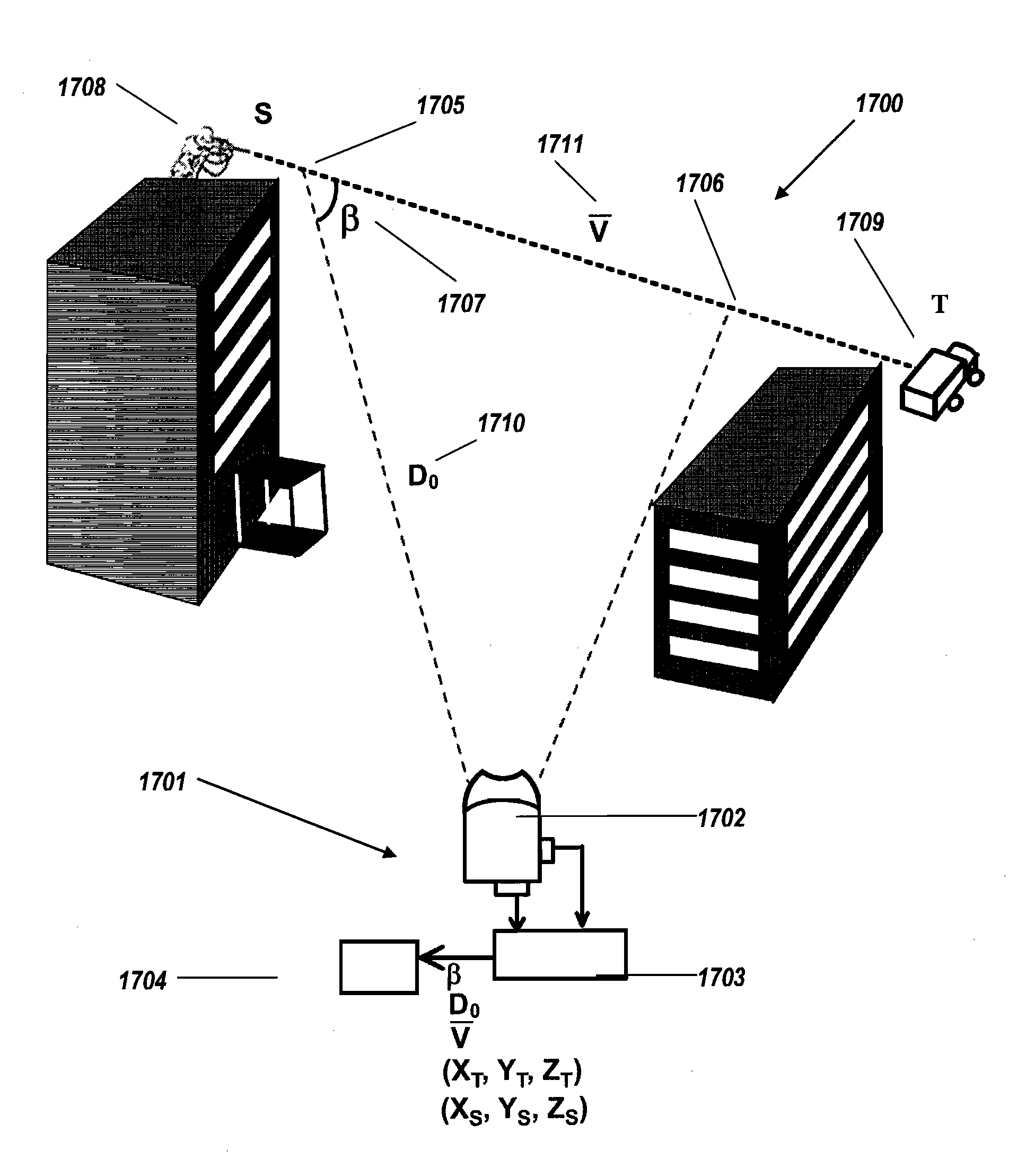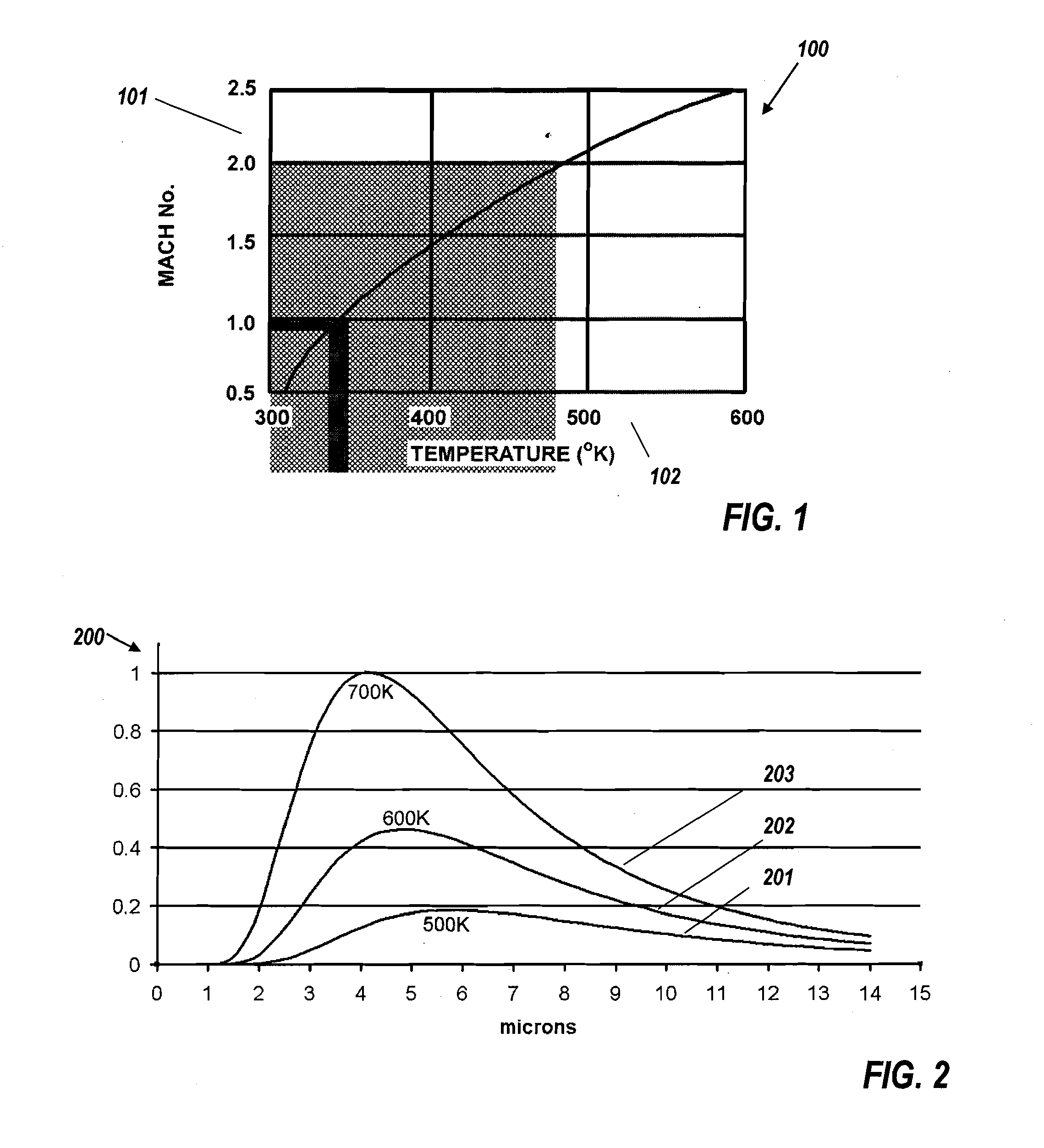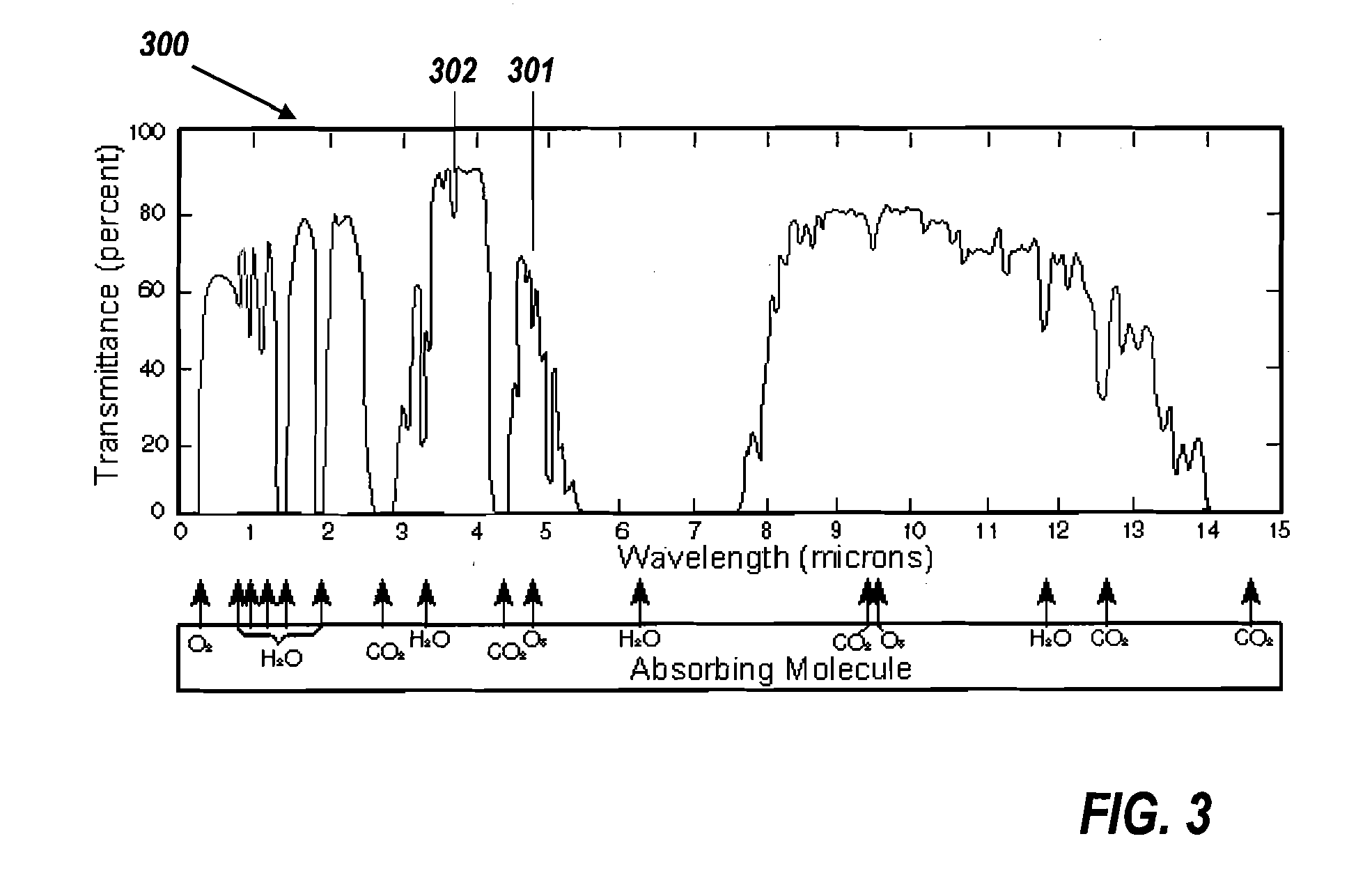Passive Electro-Optical Tracker
a tracking device and electro-optical technology, applied in the field of passive electro-optical tracking devices, can solve the problems of reducing the computing power needed to track hostile projectiles, and achieve the effects of saving lives, short reaction time, and high degree of accuracy
- Summary
- Abstract
- Description
- Claims
- Application Information
AI Technical Summary
Benefits of technology
Problems solved by technology
Method used
Image
Examples
Embodiment Construction
[0028]A better understanding of various features and advantages of the present methods and devices may be obtained by reference to the following detailed description of the invention and accompanying drawings, which set forth illustrative embodiments. Although these drawings depict embodiments of the contemplated methods and devices, they should not be construed as foreclosing alternative or equivalent embodiments apparent to those of ordinary skill in the subject art.
1. Principles of Operation
1.1 Aerodynamics of Fast Moving Projectiles; Speed-Temperature Dependence.
[0029]The surface of fast-moving bullets and other projectiles is quickly heated by air friction to a speed-dependent temperature, as detailed in Ref [1]. FIG. 1 shows a graph 100 with an ordinate 101 of projectile speed in Mach numbers (relative to Mach 1=340.3 m / s) and an abscissa 102 of absolute temperature. High speed IR imaging of an example of a bullet from a rifle reveals that it is traveling with a speed of 840 m...
PUM
 Login to View More
Login to View More Abstract
Description
Claims
Application Information
 Login to View More
Login to View More - R&D
- Intellectual Property
- Life Sciences
- Materials
- Tech Scout
- Unparalleled Data Quality
- Higher Quality Content
- 60% Fewer Hallucinations
Browse by: Latest US Patents, China's latest patents, Technical Efficacy Thesaurus, Application Domain, Technology Topic, Popular Technical Reports.
© 2025 PatSnap. All rights reserved.Legal|Privacy policy|Modern Slavery Act Transparency Statement|Sitemap|About US| Contact US: help@patsnap.com



